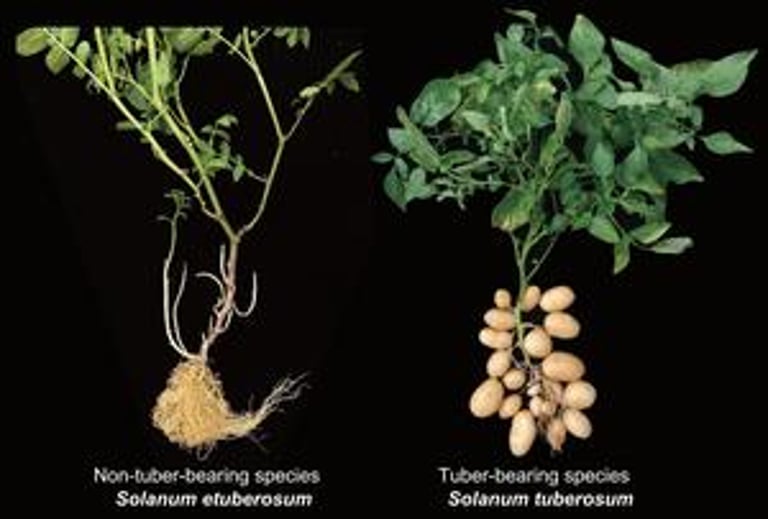Potato Evolution Unveiled: Ancient Hybridization with Tomato Ancestor Shaped Global Staple's Success
July 31, 2025
Recent research has clarified the origins of potatoes, revealing they evolved from a tomato ancestor nearly 9 million years ago through hybridization with a plant called Etuberosum.
This hybridization event led to the formation of the potato lineage, which includes the cultivated potato, Solanum tuberosum, and 180 wild species.
The study highlights how new organs can emerge from hybridization, giving rise to new plant lineages, which is evident in the development of tubers that store nutrients.
Interestingly, while interspecies hybridization often results in sterile offspring, in this case, it produced a successful organism capable of thriving in diverse environments.
Potatoes adapted remarkably to high-altitude Andean habitats, leading to a vast diversity cultivated by Indigenous people, who developed hundreds of potato varieties.
Today, potatoes are recognized as the world's third most important staple crop, providing 80% of human caloric intake alongside maize, rice, and wheat.
Their versatility and low greenhouse gas emissions contribute to their status as a climate-friendly food, making them vital for sustainable agriculture.
Introduced to Europe in the 16th century, potatoes faced skepticism but eventually became a nutritional staple due to their adaptability.
The study, published in the journal Cell, emphasizes the importance of hybridization in evolutionary biology and its implications for agriculture.
While hybridization can yield negative genetic outcomes, it can also produce beneficial combinations, as seen with the 107 wild potato species that exist today.
This evolutionary process occurred long before the common ancestor of humans and chimpanzees existed, underscoring the deep historical roots of these plants.
The findings open avenues for developing more resilient crops with enhanced nutritional qualities, aiming to improve biodiversity and agricultural sustainability.
Summary based on 17 sources
Get a daily email with more Science stories
Sources

The Washington Post • Jul 31, 2025
Where did the potato come from? Tomatoes, 9 million years ago, apparently.
The Guardian • Jul 31, 2025
‘This wasn’t obvious’: the potato evolved from a tomato ancestor, researchers find
The Atlantic • Jul 31, 2025
Remarkable News in Potatoes: They Evolved From Tomatoes